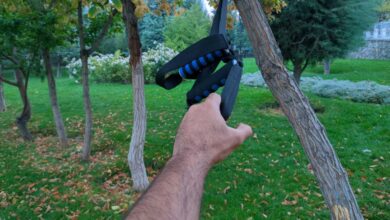TRX Deltoid flies are a category of TRX shoulder workouts. The most common types of TRX deltoid flies are TRX I deltoid fly, TRX Y deltoid fly, TRX T deltoid fly, and TRX W deltoid fly. They are also called TRX I, Y, T raise. Aside from those, here we introduce a couple of other forms that can fit into your training program.
Each TRX deltoid fly targets a particular part of the deltoid muscle, which are bolded in this article. It is essential to pay attention which part of the shoulder is targeted so that you can design an appropriate training plan and avoid overtraining and undertraining.
Table of Contents
TRX l Deltoid Fly
TRX I deltoid fly is also called TRX front delt raise. This TRX shoulder fly trains the anterior deltoid, which is at the front of part of shoulder muscles.
To perform this exercise:
- Hold a TRX handle in each hand and face toward the anchor point.
- Hands are shoulder-width apart and keep them in that position throughout the movement.
- Lean backward with arms extended and palms facing down to create tension on the straps.
- Keeping the arms straight, initiate the movement by bringing the hands upward until your body forms an “I” shape.
- Slowly bring hands down to the starting position while simultaneously leaning backward.
Adjust the difficulty of TRX deltoid flies by changing the slope of body to the floor. For the efficiency of the exercise, pause at the top of the movement, then slowly return to the starting position. You can implement intelligent weight technique to create initial tension at the top of the movement. Control the movement throughout the entire range of motion.
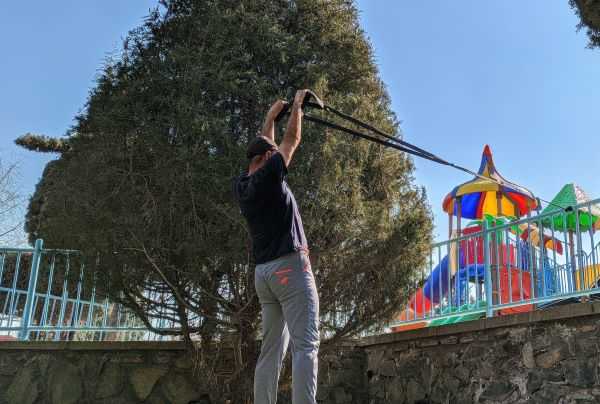
TRX l Deltoid Fly with Weight
Combining TRX with weight is a great way to add benefits of traditional weight training. For TRX I deltoid fly with weight, attach weight to the anchor strap and use handles to raise the weight off the ground.
This exercise is quite similar to traditional dumbbell and barbell front raises. We can do it with both hands, single hand, or one hand at a time.
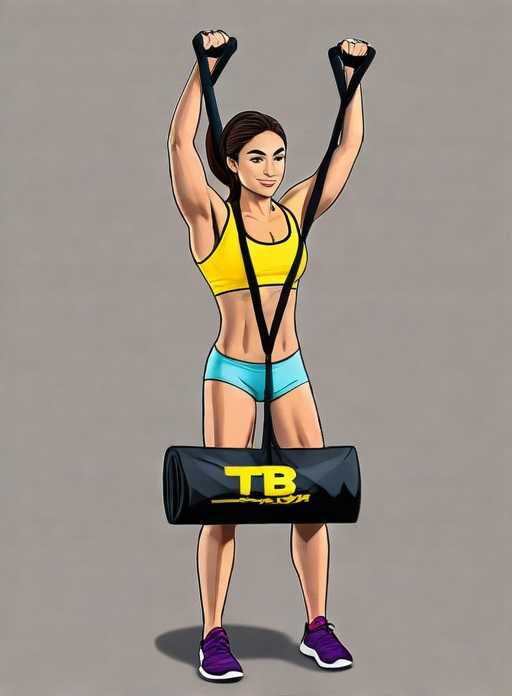
TRX Y Deltoid Fly
TRX Y deltoid fly or TRX Y deltoid raise has a form similar to TRX I fly, except while hands move upward, we open them wider than shoulder-width. Your arms and torso form a Y shape in this position. Afterward, slowly bring them down to the initial position while simultaneously narrowing your hands distance.
TRX Y deltoid fly activates all three heads of deltoid muscle at different degrees, particularly, the posterior and medial deltoid. It also activates traps and rhomboids muscles (located between shoulders).
Remember, opening hands or narrowing them is simultaneous to the upward or downward movement of arms. A common mistake is to raise arms in I shape and then open them wide.
We can do TRX Y deltoid fly with double anchor point too.
For dedicated movement on medial deltoid read, TRX Lateral Raises with Different Forms.
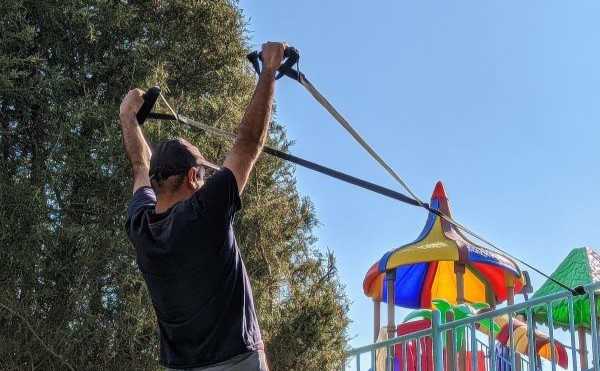
TRX Y Deltoid Fly with Weight
Combining TRX Y deltoid fly with weight is doable. Attach a heavy object to the anchor strap, hold TRX handles and perform TRX Y deltoid fly with weight.
To do this exercise properly, you may need to stand on top of a raised platform so that there is enough space underneath to hang the weight.
TRX T Deltoid Fly
The starting position in TRX T deltoid fly is similar to I fly, but instead of raising hands, open them at both sides in a T shape. We can use supinated, pronated or neutral grip for this exercise, but the standard grip position is when palms are facing each other.
The TRX T deltoid fly is an excellent exercise for targeting the rear deltoids and upper back muscles, the muscles on the back of the shoulders. We can also use double anchor points for this exercise; in that case, it provides a wider range of motion.

Doing TRX T deltoid fly with weight is another option. This one requires you to bend over to 90 degrees and stand on an elevated platform. You need enough space underneath your feet to hang the weight.
TRX W Deltoid Fly
The starting position in TRX W deltoid fly is similar to I deltoid fly, but with hands facing each other at the beginning. After that, as you open your arms at both sides, bend your elbows and turn your forearms upwards to a vertical or wider angle. At this position, you take the form of W. Next, slowly return to the starting position.

In TRX W fly, if elbows form a vertical angle rather than a wide angle, there is more emphasis in the external shoulder rotation part. For dedicated shoulder rotation exercises read: TRX Shoulder External and Internal Rotation.
TRX Lying Deltoid Flies
We can perform many of the TRX deltoid flies in lying position. Specifically, we can do TRX I, Y, and W flies in lying position instead of standing position. Performing these exercises in lying position provides a wider range of motion than standing position; it challenges shoulder muscles at a different angle.
For example, performing TRX lying T deltoid fly starts with challenging lateral deltoid, and as you sit up, it shifts to the posterior deltoid.
To perform TRX deltoid flies in lying position, we can also adjust the height of the TRX anchor point. Therefore, using mid or low TRX anchor point at this position allows us to perform the exercises at a wider range of motion compared to the standing position.
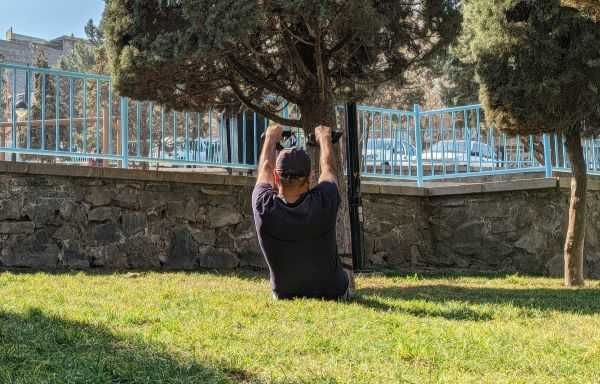
To do TRX lying deltoid flies, lie on your back on the floor while holding TRX handles and execute TRX I, Y, W, and T flies by only raising your upper body to a sitting position. Afterward, return slowly to the lying position.
We can benefit from intelligent weight technique in TRX lying deltoid flies by slightly bending knees and pushing feet onto the ground during the negative phase of the movement. This imposes extra pressure to the exercise.
TRX Single Arm Deltoid Flies
We can do TRX I, Y and W fly in single-arm mode, or do them one arm at a time (except T deltoid fly). So, we have:
- TRX I deltoid fly – one arm at a time
- TRX Y deltoid fly – one arm at a time
- TRX W deltoid flt – one arm at a time
We can do the same thing for TRX lying deltoid flies.
We can also have some unilateral TRX deltoid flies. The unilateral TRX shoulder flies require standing with one side of the body toward the anchor point. We can also bend one knee to assist with the exercise.
TRX Unilateral Rear Deltoid Pull
- Stand with one side of body toward anchor point.
- Hold the TRX handle with one hand while having the elbow bent, loose and in-line with the strap.
- Pull the handle using the rear deltoid muscle and use one leg to assist and control the movement.

TRX Unilateral Elbow Deltoid Fly
For this exercise, we put one forearm inside a TRX foot cradle and hold it near the elbow. Then perform the elbow deltoid fly. There are two ways to hold the TRX foot loop with forearm:
- You can bend your elbow upward at 90-degree angle.
- Hold your arm straight and bend the elbow as you move your arm outward.

These exercises highly engage back muscles. Hence we can can in clude them with back day plan. In fact many exercise programs consider rear deltoid and back muscles in one training session.
TRX Split Deltoid Fly
TRX split deltoid fly, also called TRX alligator pull, is a combo exercise that trains both deltoid and back muscles. Hence, we can include it in both TRX shoulder workouts and TRX upper back exercises.
- Starting position is similar to TRX I fly with both handles in hands.
- Initiate the movement by raising one hand upward and moving another hand downward.
- Return to the initial position.
- Repeat the move by changing the upward and downward movements of hands.
- Return to the initial position.

TRX Low Deltoid Fly
TRX low deltoid fly has a similar form to TRX straight arm pulldown. Except, in TRX low deltoid fly arms are at 45 degrees to the torso.
TRX low deltoid fly engages a variety of muscle groups. Not only does it engage posterior deltoids but also lats muscles in the back.
- Hold TRX handles with any of the supinated, pronated or neutral grip and lean backward.
- The elbow can be slightly bent but try to maintain its position as you don’t want to shift into tricep exercise.
- Pull your hands downward at about 45 degrees angle from your side.
- Slowly return to the initial position.

- We can also do this exercise with crossing double anchor points, which makes a difference in the angle of resistance.
- Another variation is using low anchor points with either single or double anchors.
Pay attention to your posterior deltoid muscle during the movement and try to feel the tension in that area. You may put one foot in front of the other to benefit from the intelligent weight technique by bending one knee. You can use any grip position: supinated, pronated and hammer grip.
TRX Split Squat with M Deltoid Fly
TRX split squat with M deltoid fly is the reverse of TRX low deltoid fly, and it targets the anterior deltoid as well as upper chest muscles. For this exercise, arms are straight down like in M and not at 45-degrees angle.
- Stand facing away from the anchor point.
- Hold TRX handles with arms pointing downward.
- Move one step forward and bend the front knee, which drives the hands backward.
- Return to the initial position.
Remember this is a TRX shoulder exercise. Hence, keep the tension on the target muscle. The squat part is to help with the range of motion for the M deltoid fly. This exercise also complements the range of motion in TRX I deltoid fly. We can perform it with supinated, pronated or hammer grip.
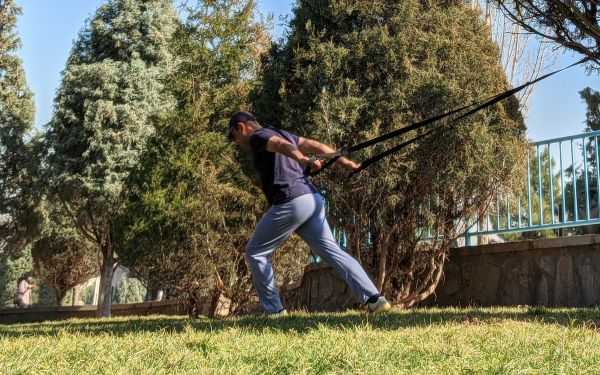
Final Tips for Performing TRX Deltoid Flies
Try to keep your shoulders down during TRX deltoid flies for the following reasons.
- Shoulder Stability: Pressing the shoulders down engages the scapular stabilizer muscles like the lower trapezius, serratus anterior, and rhomboids. This provides a stable foundation to lift the arms overhead through the full range of motion. Keeping the shoulders down helps to prevent compensation patterns like shoulder shrugging or arching your back.
- Injury Prevention: Elevated or shrugged shoulders during overhead lifting can impinge on the rotator cuff tendons. Pressing the shoulders down creates more room in the shoulder joint and reduces the risk of shoulder impingement as you raise your arms. This safer alignment reduces stress on the rotator cuff.
- Increased Deltoid Activation: When the shoulders are kept down and stabilized, more tension is put directly on the working deltoid muscles. This increases muscle activation and overload on the target delts.
TRX deltoid flies are not the only ways to train shoulder muscles. For a balanced training plan, you should mix them with other TRX shoulder workouts.




